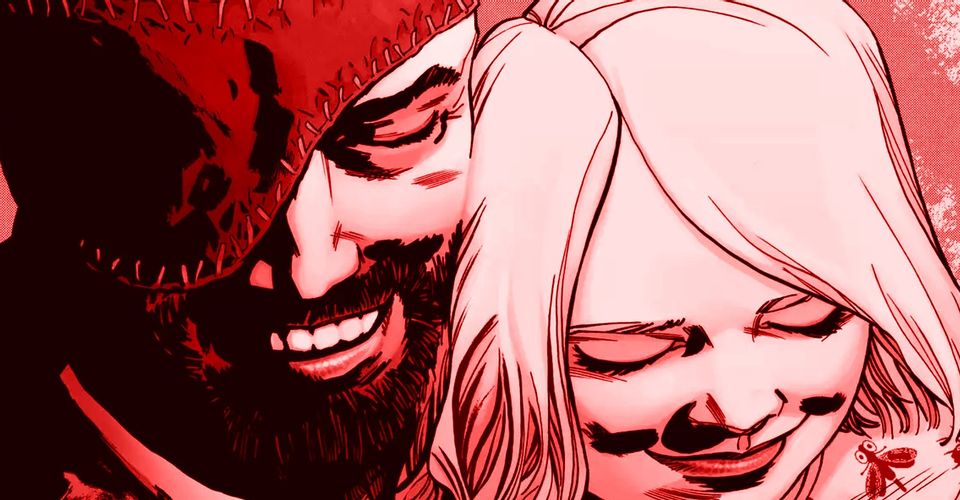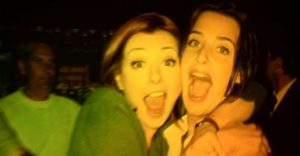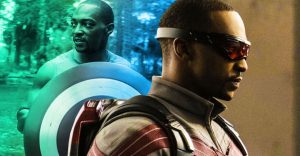The Walking Dead Comics End With Carl’s Corruption

The original The Walking Dead comic series ended with a bang. With no prior warning, issue #193 concluded the series, jumping forward several decades from the death of Rick Grimes to show what becomes of the people he left behind. In an issue centering on a legal case that bans the display of zombies for financial gain, readers get to see a world which is quickly forgetting “the Trials” – on the brink of uniting the East and West Coasts with a new American railroad, and increasingly made up of people who didn’t experience the zombie apocalypse firsthand.
In this world, Carl Grimes kills a roaming zombie, but far from the sensible act of his adolescence, his behavior is deemed a crime, since the zombie was the private property of Hershel Greene, who exhibits them in a popular traveling show. Thankfully, Carl isn’t imprisoned for his crimes, with a last-minute reprieve allowing him to go home and read to his daughter. When the comic was released, fans took this as at least partially a happy ending, with Carl finding peace and love in a complacent but much safer and less barbaric society. In hindsight, however, it’s a darker story than it first appeared.
To readers, Carl is undeniably in the right in his court case – almost 200 issues have shown how deadly the walking dead can be. The problem is that it isn’t the rule of law that ultimately saves Carl, but top-down political corruption and entrenched nepotism. In Carl’s first trial, President Maggie Greene (Hershel’s mother, and Carl’s old friend) arrives to speak to the judge. Multiple characters claim Maggie has used her influence to cover for Hershel in the past, but this time she speaks up for Carl, asking the judge to forego jail time or a huge fine and just allow him to replace the zombie on his next trip outside the Safe Zone.

Outraged by this demand, Carl kills Hershel’s other zombies and goes on a final messenger run, ultimately returning for what he knows will be a serious trial. Indeed, the case is rushed to High Court and overseen by Judge Hawthorne, who turns out to be Carl’s old friend Michonne. Not only does Judge Hawthorne clear Carl of all charges, she decrees that owning and displaying zombies for profit will thereafter be illegal – a sensible decision that clearly wasn’t the law prior to this case.
While it’s satisfying to see Carl vindicated, his entire experience is a tour of the corruption present in the newly formed society. During the trial, Judge Hawthorne smiles warmly as Carl references their mutual departed friends, and afterwards she jokingly asks, “Did you really think I was going to let them send one of my favorite people to jail?” In both instances where he’s broken the law, Carl is bailed out by powerful friends who step in behind the scenes, even changing the law in his favor. Carl knowingly breaks the law and uses his connections and family reputation to get away with it. The guard who takes Carl to his trial even says that this is “not the way a Grimes should be treated.”

In fact, Carl walks out of the trial fixed by his father’s powerful friend, past a statue of his father, home to read his daughter a book which celebrates Rick as an almost religious figure in their society. On his travels, Carl meets people who are bitter about how highly Rick is lauded – even people he hurt – but dismisses them, continually invoking the idea that the society around him is wrong because it’s not the one his father wanted. Even ignoring the hints of a shaky legal system – one in which personal property rights make it illegal to kill a roaming zombie – the society depicted in this final issue is riven by corruption. At the time, it was possible to read it as a vindication of Rick’s struggles, but in a society that is reckoning more than ever with the fallout of nepotism and corruption, it’s difficult to read The Walking Dead #193 and see anything but heroes who use past glories to justify whatever behavior benefits their friends and family.
About The Author


















